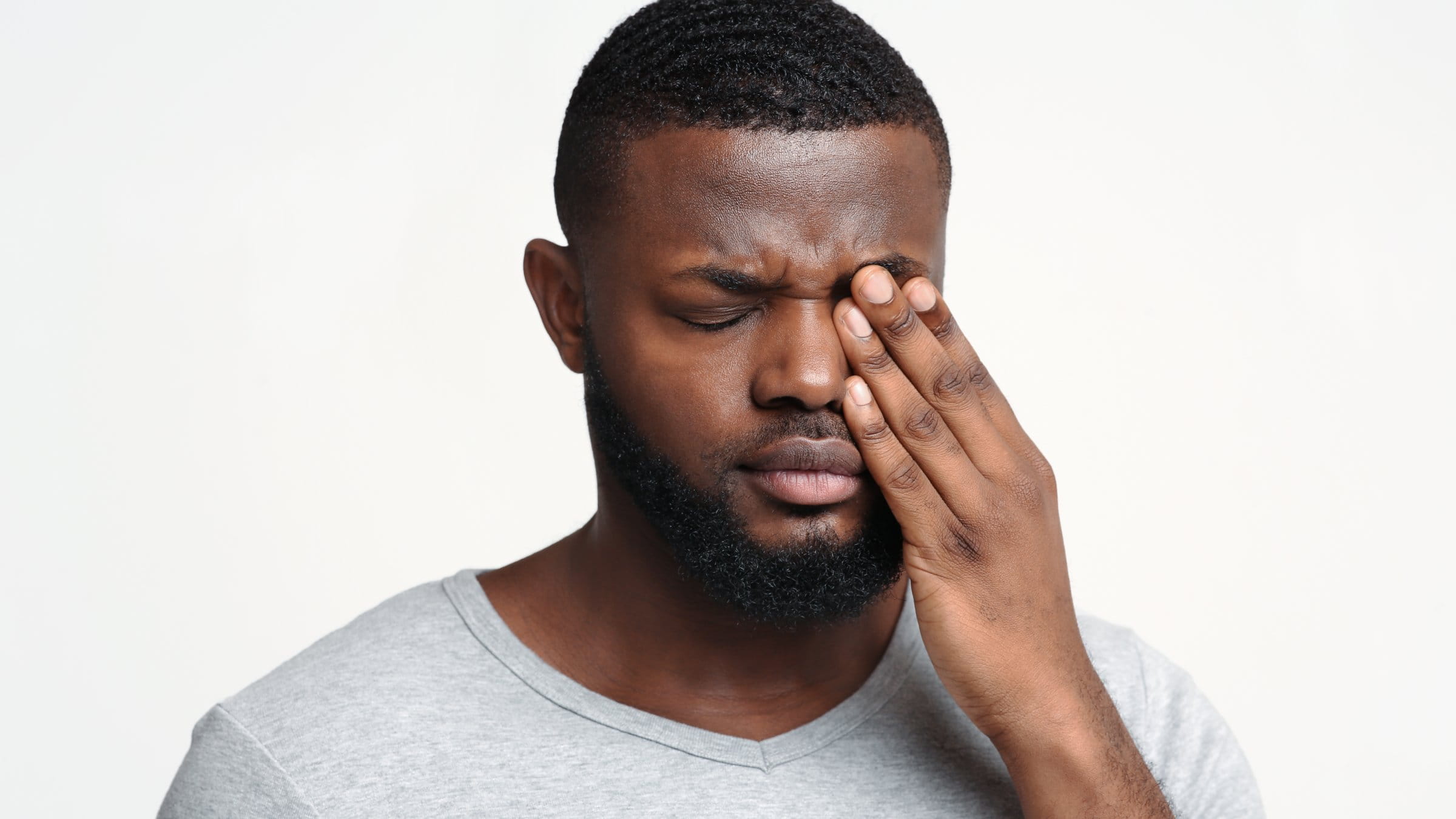
From slipping while applying eyeliner or mascara, to getting jabbed by a baby playing too closely to your face, to getting poked while playing sports, ophthalmologists like me have seen all the ways someone can get poked in the eye.
Getting poked in the eye can cause serious problems in some rare situations, but, thankfully, it usually causes more mild, irritating injuries.
Eye-poke injuries, their symptoms and treatment
Subconjunctival hemorrhage
After getting poked in the eye, one of the more common processes that can develop is a subconjunctival hemorrhage. This is a bright red spot on the white of the eye that appears due to a broken blood vessel. Usually, this doesn’t cause any pain or vision changes, but it may be associated with mild eye discomfort or irritation.
People on blood thinning medications are more likely to develop a larger hemorrhage. Hemorrhages resolve on their own but can sometimes take weeks to resolve completely. If the eye feels irritated, use artificial tears to provide relief.
Corneal abrasion
Another common result of being poked in the eye, a corneal abrasion is a scratch on the cornea, or the clear surface of the eye. These can be very painful and feel like something is stuck in your eye. Sometimes, the eye is so uncomfortable that it's hard to keep it open; other symptoms include redness, tearing and blurred vision.
Corneal abrasions usually resolve on their own over the course of a few days. However, just like with scratches on other parts of the body, there’s a risk of developing an infection. Therefore, they’re typically treated with antibiotic eye drops to prevent infection or other more serious issues, such as corneal ulcers.
Hyphema
If an eye is injured with enough force, it can cause damage to blood vessels in the eye. A hyphema happens when there’s bleeding in the front of the eye.
In addition to decreased vision, this can cause elevated eye pressure, which not only produces eye pain and headaches, but could cause permanent damage to structures of the eye and lead to issues like glaucoma. This needs to be treated and monitored closely by an eye care provider to prevent or minimize long-term eye problems.
Vitreous hemorrhage
A vitreous hemorrhage, which is bleeding in the back of the eye, can also be associated with decreased vision, but it rarely leads to permanent damage. However, it can be a sign of a more serious problem, such as a retinal tear or detachment.
Retinal tears and retinal detachments
Blunt trauma to the eye can also cause the retina to tear, which is usually accompanied by new flashes of light or floaters in the vision. If fluid travels beneath the retinal tear or break, this could progress to a retinal detachment. This may produce a curtain or shadow in the vision and can cause long-term vision loss. Retinal tears or breaks are therefore usually treated with laser procedures to prevent retinal detachments, which usually require urgent surgery.
Open globe
Less commonly, being poked in the eye could actually cause an eye-threatening emergency. With enough force, a blunt trauma could actually cause a defect in the wall of the eye itself, causing the eye to be “open,” and therefore referred to as an “open globe.” It’s typically accompanied by decreased vison and eye pain and requires serious surgery to save the eye.
A variety of other, less common eye problems may occur after being poked, so see an eye care provider if there are any vision changes or eye pain after an eye injury.
What steps should you take after getting poked in the eye? When should you see a doctor?
The first step is to try to assess your vision and level of pain. If there are associated vision changes and eye pain from the injury, seek care from an eye care provider.
If there are no vision changes and minimal discomfort, you can use over-the-counter artificial tear lubricating drops to provide relief and comfort. If there’s no improvement or if symptoms worsen after 12 to 24 hours, seek care at that time.
Additionally, if there’s any risk of an object being stuck in your eye, go to an eye care provider to have this evaluated. If an eye care provider isn’t available, go to the nearest emergency department for evaluation.
How can you prevent a poke in the eye?
Wear eye protection during any activity that could put the eye at risk for trauma. From doing household projects to playing contact sports, proper eye protection can prevent serious eye injuries.

Ready to learn more about eye care?
Ohio State's ophthalmology team provides comprehensive care backed by one of the nation's leading academic health centers.
Expert care starts here




